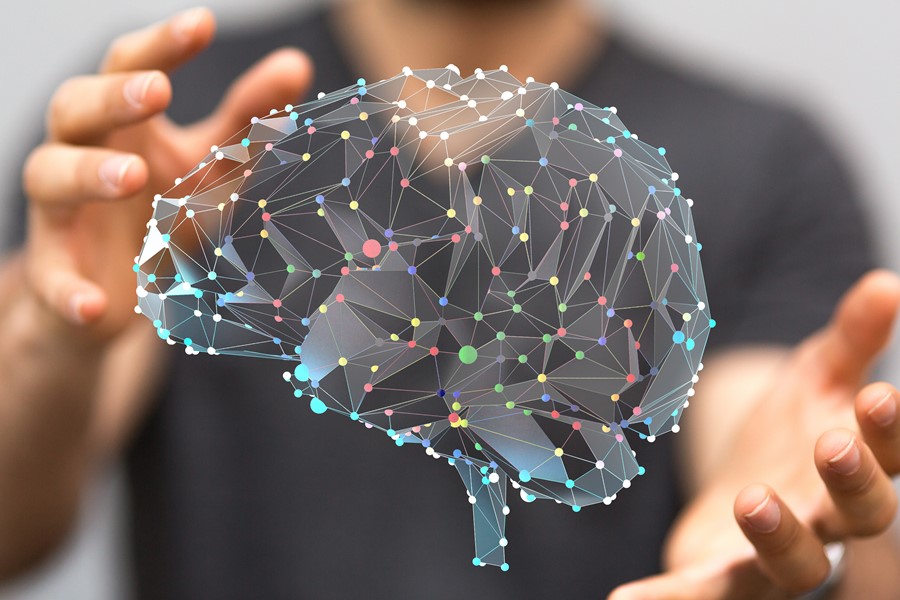Graphene sensors read low-frequency neural waves associated with distinct brain states
A biocompatible implant based on graphene safely measures and predicts brain states.
Graphene Flagship scientists have developed a sensor based on CVD graphene that detects brain signals in a wide frequency band, from extremely low frequencies to high frequency oscillations. The sensor is biocompatible and could be used to measure and predict brain states. Furthermore, the graphene sensors could be used in chronic implants due to their high stability in the brain.
The study was conducted by scientists at Graphene Flagship partners the Catalan Institute of Nanoscience and Nanotechnology (ICN2), the Microelectronics Institute of Barcelona (CSIC), CIBER-BBN and ICREA, Spain, Ludwig-Maximilians University, Germany, and the University of Manchester, UK, in collaboration with Graphene Flagship partner Multi Channel Systems GmbH, Germany.
The consortium showed that graphene-based sensors grant access to an elusive low-frequency region of brain activity. Current methods to detect brain waves use metallic electrodes, which are ineffective at measuring very low-frequency activity – known as the ‘infra-slow’ region. Thanks to graphene’s sensitivity, scientists can now easily gather information from this region and paint a better picture of animals’ brain activity. This could form the basis for new types of neurotherapeutic medical technology.
Using a technology developed by ICN2 and the Microelectronics Institute of Barcelona, in the framework of the Graphene Flagship and the BrainCom European projects, Graphene Flagship scientists built an array of transistors that record and transmit activity information when implanted into the brain. The sensor has small channels on the surface: when they make contact with brain tissue, the electrical signals within the brain cause small changes in conductivity. These changes produce a signal and are recorded to create a brain activity ‘fingerprint.’
“With our array of devices, based on CVD graphene, we can record signals from the infra-slow region with very high accuracy,” Jose Garrido, from Graphene Flagship partner ICN2, Spain, explains. “In the brain, there is a correlation between lower and higher frequencies of brain activity, so the lower frequencies tend to dictate what the higher frequencies look like. We demonstrated that, by measuring the infra-slow activity, with frequencies below a tenth of a hertz, we can decode the ‘brain states’ of an animal.” Garrido believes this technology could lead to new treatments for brain disorders like epilepsy, as certain characteristic signal patterns could reveal ‘brain states’ likely to lead to seizures.
To test the device, they implanted it into the brain of a freely behaving rat, monitoring it continuously. The signals were transmitted wirelessly using a miniaturized electronic headstage developed by the industrial partner Multichannel Systems. The scientists found that the signal characteristics measured during different types of brain activity, such as during periods of high activity or during sleep – the so-called ‘brain states’ – correlated very well to the infra-slow signals decoded by the graphene-based implant.
Furthermore, Kostas Kostarelos and colleagues at Graphene Flagship partner the University of Manchester, UK, tested the biocompatibility of the devices. They found no inflammation, other than that expected to occur from the device’s implantation, over the entire 12-week duration of their tests, and the device did not degrade over this period.
“It is very remarkable to see that we can properly identify and correlate the animals’ brain states with the measured infra-slow activity,” Garrido says. Now, the next step will be to explore commercial applications. “We are already collaborating with some companies interested in this technology, and we aim to translate it into a product – and, beyond that, take it into clinics and hospitals,” he concludes.
Serge Picaud, Deputy Leader of the Graphene Flagship’s Biomedical Technologies Work Package, comments: “Novel technologies are always a vector for new discoveries. In this case, graphene sensors have granted us access to the infra-slow brain waves. Recording them in animal models and patients will demonstrate whether we can actually rely on these new measurements for precise diagnostics and treatment options in patients with serious brain diseases like epilepsy.”
Andrea C. Ferrari, Science and Technology Officer of the Graphene Flagship and Chair of its Management panel, adds: “The Graphene Flagship recognised the potential of graphene and layered materials for biological applications early on. This remarkable work brings us closer to applications in this area, with a novel tool enabled by the unique properties of graphene.”
References
Garcia-Cortadella, Ramon, et al. "Graphene active sensor arrays for long-term and wireless mapping of wide frequency band epicortical brain activity." Nature communications 12.1 (2021): 1-17.

The sensor consists of an array of transistors implanted into the brain to record and transmit information. Electrical signals within the brain cause small changes in conductivity, and these changes reveal data about the current brain state.
With our array of graphene-based devices, we can record signals from the infra-slow region with very high accuracy.
ICN2 Barcelona




